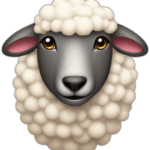Coffee Blog
The Granular Truth: How Grind Size Unlocks Your Coffee’s Potential

Coffee is a symphony of variables. We meticulously source single-origin beans, invest in precision brewers, and measure our water to the gram. Yet, one of the most critical factors in crafting the perfect cup often gets overlooked: the size of the coffee grounds. It’s not just a matter of “chunky” or “powdery”; grind size is the primary controller of extraction, the process that dissolves flavors from the coffee grounds into your water. Understanding the fundamental difference between coarse and fine grind is the key that unlocks a world of flavor, transforming your daily ritual from a routine into an experience.
This isn’t just about choosing a setting on your grinder. It’s about understanding the science of extraction, the mechanics of your equipment, and how to dial in your brew to achieve a balanced, delicious cup every single time. Let’s dive into the granular details that make all the difference.
The Core Principle: Surface Area and Extraction
The entire conversation about grind size hinges on one scientific principle: surface area.
Imagine a sugar cube. It dissolves slowly in your tea because its surface area is small. Now, crush that cube into a fine powder. It dissolves almost instantly because you’ve dramatically increased the amount of surface exposed to the liquid.
Coffee operates on the exact same principle.
-
Fine Grind: Creates thousands of tiny particles with a massive collective surface area. Hot water can penetrate and extract flavors from this large surface area very quickly and efficiently.
-
Coarse Grind: Creates larger, chunky particles with a much smaller collective surface area. Water extracts flavors from these particles more slowly and gradually.
This relationship between surface area and extraction speed is the single most important concept in coffee brewing. Get it right, and you achieve balanced extraction. Get it wrong, and you end up with sour, under-extracted coffee or bitter, over-extracted coffee.
Diagnosing Your Cup: The Taste of Extraction
Your palate is the best tool for diagnosing grind size issues. The flavors in your cup directly tell you what’s happening during extraction.
The Signs of a Grind That’s Too Fine (Over-Extraction):
When your grind is too fine for your brew method, the water gets trapped among the tiny particles, leading to a long, arduous contact time. This over-extracts the coffee, pulling out not only the delightful sugars and acids but also the bitter, astringent compounds locked deep inside the bean.
-
Taste: Bitter, harsh, dry, or ashy.
-
Mouthfeel: A dry, puckering sensation on the tongue (astringency).
-
What’s Happening: The water has extracted too much, for too long.
The Signs of a Grind That’s Too Coarse (Under-Extraction):
When your grind is too coarse, the water flows through too quickly or fails to penetrate the large particles effectively. It only manages to extract the brightest, most acidic compounds, leaving the sweet, sugary, and complex flavors behind in the grounds.
-
Taste: Sour, sharp, salty, or weak with a lack of sweetness.
-
Mouthfeel: Thin, watery, and lacking body.
-
What’s Happening: The water hasn’t extracted enough, too quickly.
The goal is the “Goldilocks” zone of extraction—a grind size that allows for just the right amount of contact time to pull out a harmonious balance of sweetness, acidity, and body.
Beyond Coarse and Fine: The Full Spectrum of Grinds
While we talk about “coarse” and “fine,” grind size is actually a full spectrum. Different brew methods occupy specific points on this spectrum to achieve their ideal extraction time and flavor profile.
-
Coarse Grind (Sea Salt/Sourdough Bread Crumbs)
-
Best For: French Press, Cold Brew, Cupping
-
Why: These are immersion brewing methods, where coffee grounds steep in water for an extended period (4+ minutes for French Press, 12-24 hours for cold brew). A coarse grind is essential to prevent over-extraction and bitterness during this long contact time. The large particles allow for a slow, gentle extraction that highlights body and sweetness.
-
-
Medium-Coarse Grind (Rough Sand)
-
Best For: Chemex, Clever Dripper
-
Why: This grind bridges immersion and percolation. The Chemex has a thicker filter, so a slightly coarser grind prevents slow drawdown and bitterness.
-
-
Medium Grind (Regular Sand)
-
Best For: Drip Coffee Makers, Pour-Over (like Kalita Wave), Siphon Brewers
-
Why: This is the workhorse grind for most automatic machines and many manual pour-overs. It offers a balanced extraction for a contact time of around 4-6 minutes.
-
-
Medium-Fine Grind (Fine Sand/Table Salt)
-
Best For: Hario V60, AeroPress (standard method)
-
Why: The V60, with its large hole and fast flow rate, requires a finer grind to slow the water down slightly and ensure proper extraction. It’s perfect for a brew time of 2.5-3.5 minutes.
-
-
Fine Grind (Table Salt)
-
Best For: Espresso, Moka Pot, AeroPress (short brew time)
-
Why: Espresso is the extreme example. It uses very finely ground coffee and forces pressurized hot water through it in just 20-30 seconds. The fine grind creates the necessary resistance to build pressure, which is essential for forming crema and achieving the intense, concentrated flavor. A Moka Pot also requires a fine grind to create steam pressure.
-
The Grinder Itself: The Unsung Hero of Consistency
You can understand grind size perfectly, but if your grinder produces a mix of dust and boulders, you’ll never achieve a balanced cup. Consistency is everything.
-
Blade Grinders (The Whirly-Blade): These are essentially small blenders that chop beans randomly and indiscriminately. They produce an inconsistent mix of fine powder and large chunks. This leads to simultaneous over-extraction (from the fines) and under-extraction (from the boulders), creating a muddy, bitter, and sour cup. They also generate heat through friction, which can degrade the delicate coffee aromatics before you even brew.
-
Burr Grinders (The Gold Standard): These are the essential tool for any serious coffee enthusiast. They crush beans between two abrasive surfaces (burrs) at a set distance, ensuring nearly all grounds are a uniform size. This consistency is the foundation of even extraction.
-
Flat Burrs: Offer precision and are common in high-end espresso grinders.
-
Conical Burrs: Known for a wider particle distribution that some find creates a more balanced cup for filter coffee. They are also generally quieter.
-
Investing in a good burr grinder is the single most impactful upgrade you can make to your coffee game, far surpassing a new brewer or more expensive beans.
The Art of Dialing In: How to Adjust on the Fly
Knowledge is useless without application. “Dialing in” is the process of tweaking your grind size to achieve that perfect extraction for your specific beans and brewer.
Your coffee is too SOUR (Under-Extracted)?
-
Make your grind FINER. This increases surface area, slowing the water down and increasing extraction to pull out more sweetness.
Your coffee is too BITTER (Over-Extracted)?
-
Make your grind COARSER. This decreases surface area, allowing water to flow through faster and reducing extraction to prevent pulling out bitter compounds.
The Process:
-
Choose a starting point based on your brew method (e.g., medium for your drip machine).
-
Brew a cup and taste it.
-
Diagnose the flavor based on the guidelines above.
-
Adjust your grinder one small step at a time. Only change the grind size—keep your coffee dose, water volume, and temperature constant.
-
Brew again and taste. Repeat until you hit that sweet spot of balanced flavor.
Conclusion: Grind Size is Your Master Key
The journey from coarse to fine ground coffee is a journey of control. It’s the master variable that connects your brewing method to the potential locked within your coffee beans. By moving beyond the simple binary and understanding the spectrum of grinds, the critical importance of a consistent grind, and how to use your palate to diagnose and adjust, you elevate your craft.
You are no longer just following a recipe; you are engaging in a conversation with your coffee. You listen to what the flavors tell you and respond with a slight twist of the grinder. This mindful approach transforms the daily grind into a deeply rewarding practice, ensuring that every cup you brew is a testament to your understanding and skill.



 Bee Mugs
Bee Mugs Bird Mugs
Bird Mugs Bunny Mugs
Bunny Mugs Cat Mugs
Cat Mugs Goat Mugs
Goat Mugs Horse Mugs
Horse Mugs Lion Mugs
Lion Mugs Monkey Mugs
Monkey Mugs Moose Mugs
Moose Mugs Owl Mugs
Owl Mugs Sheep Mugs
Sheep Mugs Snail Mugs
Snail Mugs Turtle Mugs
Turtle Mugs Unicorn Mugs
Unicorn Mugs
 Engagement Mugs
Engagement Mugs Retirement Mugs
Retirement Mugs St Patrick’s Day Mugs
St Patrick’s Day Mugs Thank You Mugs
Thank You Mugs
 Boss Mugs
Boss Mugs Christmas Mugs
Christmas Mugs Colleague Mugs
Colleague Mugs Dad Mugs
Dad Mugs Grandad Mugs
Grandad Mugs Grandma Mugs
Grandma Mugs Husband Mugs
Husband Mugs Lawyer Mugs
Lawyer Mugs Nurse Mugs
Nurse Mugs Sarcastic Mugs
Sarcastic Mugs Uncle Mugs
Uncle Mugs Wife Mugs
Wife Mugs
 Fourth of July Mugs
Fourth of July Mugs Halloween Mugs
Halloween Mugs Thanksgiving Mugs
Thanksgiving Mugs Valentines Day Mugs
Valentines Day Mugs
 Amsterdam Mugs
Amsterdam Mugs Barcelona Mugs
Barcelona Mugs Berlin Mugs
Berlin Mugs Chicago Mugs
Chicago Mugs Dubai Mugs
Dubai Mugs London Mugs
London Mugs Paris Mugs
Paris Mugs Rome Mugs
Rome Mugs Sydney Mugs
Sydney Mugs Tokyo Mugs
Tokyo Mugs Toronto Mugs
Toronto Mugs
 Aunt Mugs
Aunt Mugs Boss Mugs
Boss Mugs Boyfriend Mugs
Boyfriend Mugs Co-Worker Mugs
Co-Worker Mugs Couples Mugs
Couples Mugs Gamer Mugs
Gamer Mugs Girlfriend Mugs
Girlfriend Mugs Nanny Mugs
Nanny Mugs Sister Mugs
Sister Mugs Teachers Mug
Teachers Mug
 Baseball Mugs
Baseball Mugs Fishing Mugs
Fishing Mugs Football Mugs
Football Mugs Golf Mugs
Golf Mugs Rugby Mugs
Rugby Mugs Soccer Mugs
Soccer Mugs Tennis Mugs
Tennis Mugs
 Best Man Mugs
Best Man Mugs Bridesmaids Mugs
Bridesmaids Mugs Father of the Bride Mugs
Father of the Bride Mugs Groomsmen Mugs
Groomsmen Mugs Matron of Honor Mugs
Matron of Honor Mugs
 Inspirational Mugs
Inspirational Mugs Offensive Mugs
Offensive Mugs Sexy Mugs
Sexy Mugs